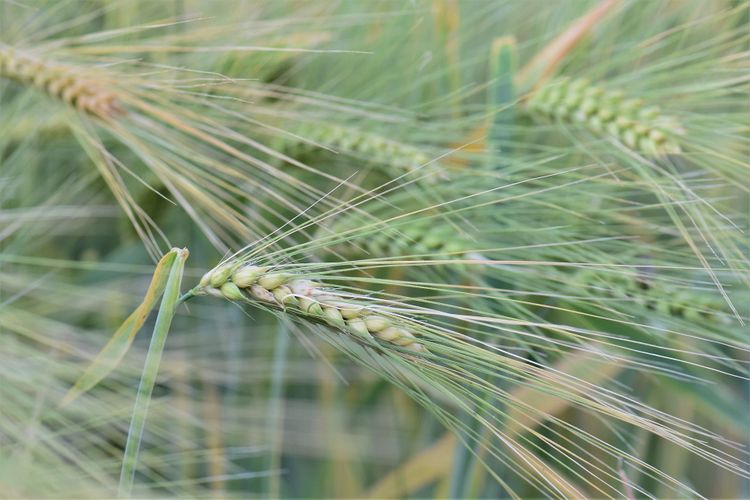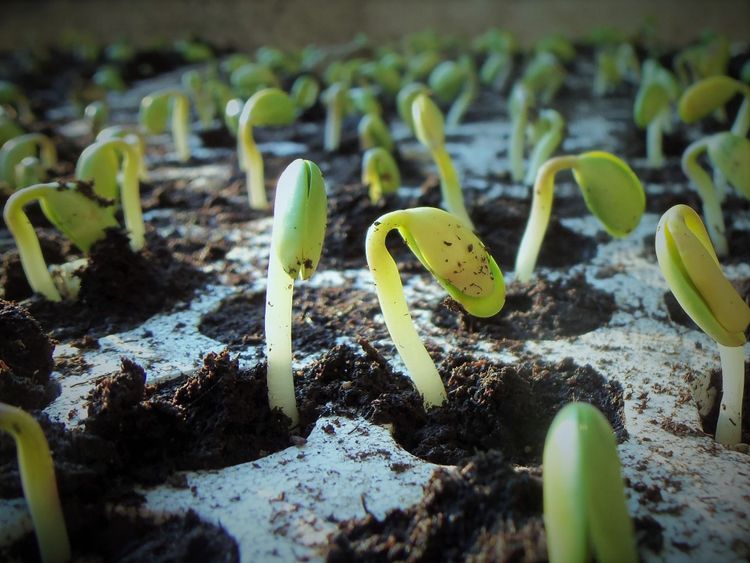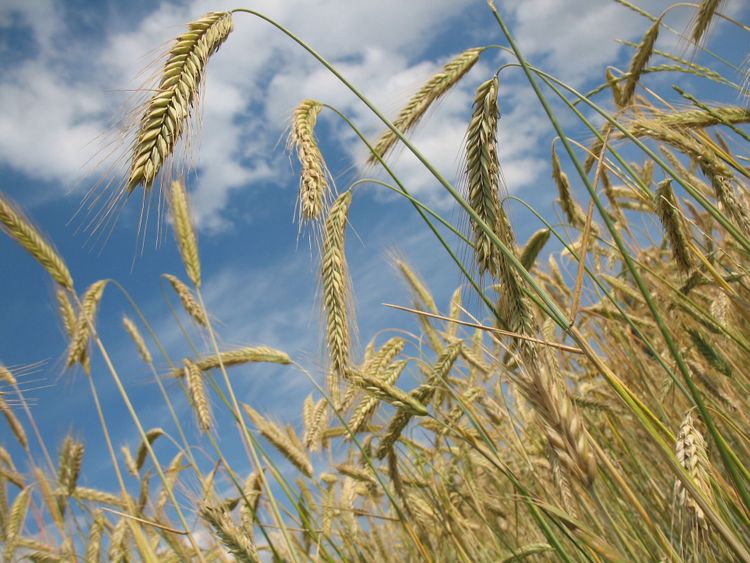Falling US Wheat Production Now the New Norm
Wheat takes the backseat
Wheat flourished under rising domestic and foreign demand with production more than doubling between 1961 and 1981. US wheat consumption would soar from 16.3 million tonnes in 1962 to 31.0 million tonnes in 1995. However, health concerns over gluten and carbohydrate intake stymied wheat consumption beginning in the mid 1990s. Since 2000, US wheat consumption for food has hovered close to 25 million tonnes.
The US predominantly grows wheat during the winter, and hard red winter wheat alone accounted for 43.1 percent of total production in 2017. This past year, 72.9 percent of total wheat production came from winter wheat. Planting for winter wheat occurs between September and November. The plant goes dormant during the winter before growing to maturity for harvest in June and July the following year. This puts wheat in direct competition with corn and soybeans for land. With profits to be had in corn and soybeans, there is a growing list of reasons for US farmers to ditch wheat.
Soft wheat’s limited use beyond food, with some varieties going into animal feed, makes it a poor candidate for investment, cultivation, and research. During the 1970s and 1980s, private industry took over the majority of research and development involving corn and soybeans. As of 2003, 93 and 90 percent of total corn and soybean acres, respectively, used seeds developed by the private sector. By contrast, approximately 70 percent of wheat seed planted in 2014 was developed by the public sector. Corn and wheat yields in 1930 were 1.287 and 0.955 tonnes per acre, respectively. In 2017, corn registered 10.78 tonnes per acre while wheat crept to just 3.114 tonnes per acre.
While wheat is naturally more drought- and heat-resistant, it has seen little of the hybrid seed advancement that has led to the rise of corn and soybeans. The drought resistant seeds plentifully available for corn and soybeans are not available for wheat. Wheat’s genome structure is large and intricate and makes research into improving drought tolerance, which is controlled by multiple genes, exceedingly tough. Without innovation in wheat seed technology, a producer’s fate is often left to Mother Nature.
Recurring droughts throughout the Great Plains have only exacerbated wheat’s shrinking acreage. The 2011 drought hit Southern US wheat, sinking production totals across the region. The Northern Plains were dry in 2017, and North Dakota’s wheat production sank to 6.5 million tonnes after harvesting 9.1 million tonnes in 2016.
The wheat export market gets crowded
US wheat acres planted and consequent production quantity nosedived in the 1950s when major producers in Kansas, Oklahoma, and Texas suffered multi-year drought conditions. Without competitors to satisfy global demand, US producers were incentivized to return to pre-drought levels. Now, the wheat export market is anything but roomy.
The United States dominated wheat exports through the 1970s. Since hitting a record volume of 48.8 million tonnes in 1981, US exports have slowly sunk to a projected 26.5 million tonnes for the 2017-18 market year. US share of global exports fell from 48.7 to 16.5 percent between 1981 and 2016. More countries began exporting in the 1980s, beginning with Argentina. After exporting more than 6 million tonnes just once in its history, Argentina exported at least 6.1 million tonnes for four straight years from 1983 to 1986. Aside from 2014 and 2015, Argentina has exported between 5 and 12 million tonnes annually since 1997.
Excluding Eastern Russia, Asian nations exported 17.5 million tonnes of wheat in 2016 compared to just 222,000 tonnes in 1976. Kazakhstan and Turkey have led the charge. Kazakhstan has exported at least 5.5 million tonnes annually since 2006. Turkey exported a record 6.2 million tonnes in 2016 and is expected to ship 6.5 million tonnes in the 2017-18 market year. Russia and Ukraine have organized better wheat production and have carved out a significant piece of the export market. Between 2000 and 2016, Ukraine exports climbed from 78,000 tonnes to 18.1 million tonnes and Russia’s total soared from 696,000 tonnes to 27.8 million tonnes. Russian exports are projected to break record highs for a fifth straight year with the USDA predicting 33 million tonnes to leave Russia in 2017-18.
Unlike most other crops, US wheat yield was never significantly greater than other countries. The lack of investment and research has led to yield growing by just 17.3 percent since 1983. In 2017, EU-28 yield was 84.61 bushels per acre compared to just 46.24 bushels per acre in the US. Additionally, the main EU producers (Germany, France, and UK) see less frequent and severe drought due to the heavy influence of the Atlantic Ocean on their weather patterns. Kansas, the top US wheat producer, can have both snow and 90 degree Fahrenheit highs as the plant emerges from dormancy in April.
Where the acres are going
For the first time ever, wheat was not the most planted crop in North Dakota after soybeans took over the title in 2017. US states are increasingly switching acres from wheat to corn and soybeans. Total combined corn and soybean acreage in Kansas for 2017 was greater than wheat for the second straight year. Between 2000 and 2017, North Dakota wheat acreage fell from 10.2 million acres to 6.7 million acres, while soybean planting has more than tripled from 1.9 to 7.2 million acres.
South Dakota has historically planted relatively equal mixes of corn and wheat. However, soybeans began to occupy more acreage in the 1980s and it was certainly not at corn’s expense. Increasing soybean and corn acreage squeezed out wheat in South Dakota with acreage tumbling from 4.1 million acres in 1980 to just 1.9 acres in 2017.
Colorado actually planted more corn than wheat for a brief stint in the early 1930s. With planted wheat acreage falling from 3.88 million in 1984 to 2.36 million in 2016, corn taking over as the top dog again in Colorado is certainly feasible. Wheat is still, by far, the most planted crop in Montana. However, acres dedicated to peas and lentils have increased in the past 10 years and are starting to dig into wheat acreage. Montana planted 5.14 million acres of wheat in 2016, its second lowest total since 1988.
Wheat’s new norm
Planted wheat acreage is projected to fall once again in 2018 to 45 million tonnes, according to USDA Agricultural Projections to 2027. Yield will tick upward to 47.4 bushels per acre, and production will rise to 49.4 million tonnes. Long term, the USDA projects wheat production to slowly climb to 56.5 million tonnes by 2027. Combine the rise of soy with a lack of private investment in wheat, a crowded export market, and an increase in climate variability, wheat is reaching a new, lower equilibrium in the US.
Global hard wheat prices jumped this past July when main exporters—US, Canada, Australia, EU-28—all experienced drought in wheat regions. By September 15, prices fell back to their normal levels as Argentina, Russia, Turkey, and Ukraine each boosted 2017 exports to satisfy demand. These brief price jumps will continue to characterize wheat. If any of these countries’ production falters, there is another waiting in line to take their market share.
US farmers’ share of global wheat production is declining and so is their impact on world wheat prices. Now, the spread between US wheat producer prices and the F.O.B. Gulf Port wheat price is highly volatile and has sat below historical values for the last three years. Farmers have even less control over the prices they receive, only adding to the long list of reasons to abandon wheat.
Some US farmers are seeking, and finding, new markets for their wheat. Producers in California exported their Desert Durum wheat to a new Ecuadorian market for the first time in 2017, and hope to enter a long term contract soon. But for US wheat farmers without a guaranteed market, Gro Intelligence believes it might be a good time to consider alternate crops. Especially with some concerns in Brazil’s and Argentina’s soybean areas due to dry and hot conditions, a switch to soybeans could turn out to be a good decision.
 Insight
InsightLow US Hard Red Winter Wheat Production Likely, Despite Acreage Boost
 Insight
InsightChina’s Grain Imports Reach Record With a Growing Reliance on Brazil
 Insight
InsightUS Soybean Acreage to Shrink to a Four-Year Low, Gro Predicts
 Insight
Insight

 Search
Search